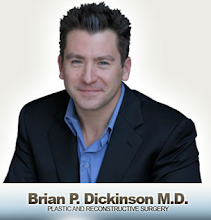

Revision breast augmentation procedures may be challenging for the Plastic & Reconstructive Surgeon as there are many variables to consider. I find these revision breast augmentation operations to be particularly enjoyable as there are often significant anatomic and aesthetic variables to address so that the outcome is successful.
Common variables in “Fitness Models” & “Runway” models include:
1) Prior breast augmentation surgery
2) Implant Malposition (Most Commonly Lateral/Axillary Displacement of Implant)
3) Muscle Contraction Induced Deformity
4) Initial scar placement
5) Capsular contracture
6) Avoiding or minimizing loss of strength
7) Low body fat
8) Desire for early return to exercise
It is important for the Plastic & Reconstructive Surgeon to be aware of dimensions and profiles of implants available to the patient to best camouflage the implant. In the “Fitness Model” and “Runway model” population the variables mentioned above make the margin for error small and the visibility of the implant may be very unforgiving. Appropriate selection of implant based on the base diameter of the patient, soft tissue characteristics of the patient, and implant profile may optimize the outcome. It may require several discussions between the surgeon and patient to make sure that everyone is on the same page with respect to implant size, shape, desired cup size, and realistic expectations.
Common variables in “Fitness Models” & “Runway” models include:
1) Prior breast augmentation surgery
2) Implant Malposition (Most Commonly Lateral/Axillary Displacement of Implant)
3) Muscle Contraction Induced Deformity
4) Initial scar placement
5) Capsular contracture
6) Avoiding or minimizing loss of strength
7) Low body fat
8) Desire for early return to exercise
It is important for the Plastic & Reconstructive Surgeon to be aware of dimensions and profiles of implants available to the patient to best camouflage the implant. In the “Fitness Model” and “Runway model” population the variables mentioned above make the margin for error small and the visibility of the implant may be very unforgiving. Appropriate selection of implant based on the base diameter of the patient, soft tissue characteristics of the patient, and implant profile may optimize the outcome. It may require several discussions between the surgeon and patient to make sure that everyone is on the same page with respect to implant size, shape, desired cup size, and realistic expectations.

